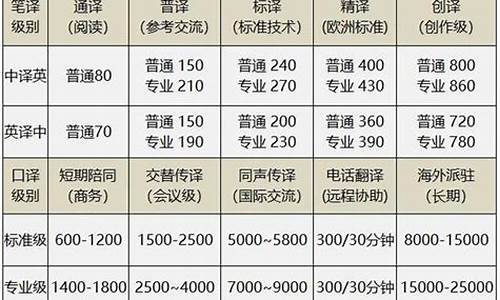Introduction: Ensuring Sustainable Business Practices in English Translation Pricing
In today's competitive global market, maintaining sustainable business practices is essential for the long-term success of any enterprise, including those in the field of English translation services. A crucial aspect of sustainable business operations in this domain involves establishing fair and competitive pricing strategies that ensure profitability while also delivering value to clients. This article explores effective methods for ensuring the sustainability of English translation pricing models, covering key considerations and strategies for success.
The Importance of Sustainable Pricing in English Translation

Sustainable pricing practices in English translation services are vital for several reasons. Firstly, they contribute to the financial stability of translation agencies, enabling them to invest in resources, technology, and talent development. Secondly, fair and transparent pricing builds trust with clients, fostering long-term relationships and repeat business. Moreover, sustainable pricing ensures that translators receive fair compensation for their expertise and efforts, thereby promoting professionalism and quality standards in the industry.
Effective Strategies for Sustainable Pricing
1. Market Analysis and Competitive Benchmarking: Conduct thorough research to understand market trends, competitor pricing strategies, and client expectations. Use this data to position your pricing competitively while offering unique value propositions.
2. Transparent Pricing Structures: Clearly communicate pricing structures to clients, detailing factors such as word count, complexity, deadlines, and additional services. Avoid hidden fees or ambiguous pricing, as transparency builds trust and credibility.
3. Value-based Pricing: Instead of solely focusing on cost-based pricing models, emphasize the value proposition of your translation services. Highlight benefits such as accuracy, cultural sensitivity, fast turnaround times, and personalized customer support.
4. Flexibility and Customization: Offer flexible pricing options to accommodate varying client needs and budgets. This could include volume discounts, retainer agreements, or tailored packages for specific industries or project types.
5. Continuous Evaluation and Adjustment: Regularly review pricing strategies based on market dynamics, client feedback, and internal performance metrics. Be willing to adapt and refine your pricing approach to maintain competitiveness and profitability.
Conclusion
In conclusion, sustainable pricing practices are essential for the long-term viability and success of English translation businesses. By implementing transparent, value-based pricing strategies and continuously evaluating market dynamics, translation agencies can ensure profitability while delivering high-quality services and fostering lasting client relationships. Prioritizing sustainability in pricing not only benefits the business but also contributes to the overall professionalism and reputation of the translation industry.



